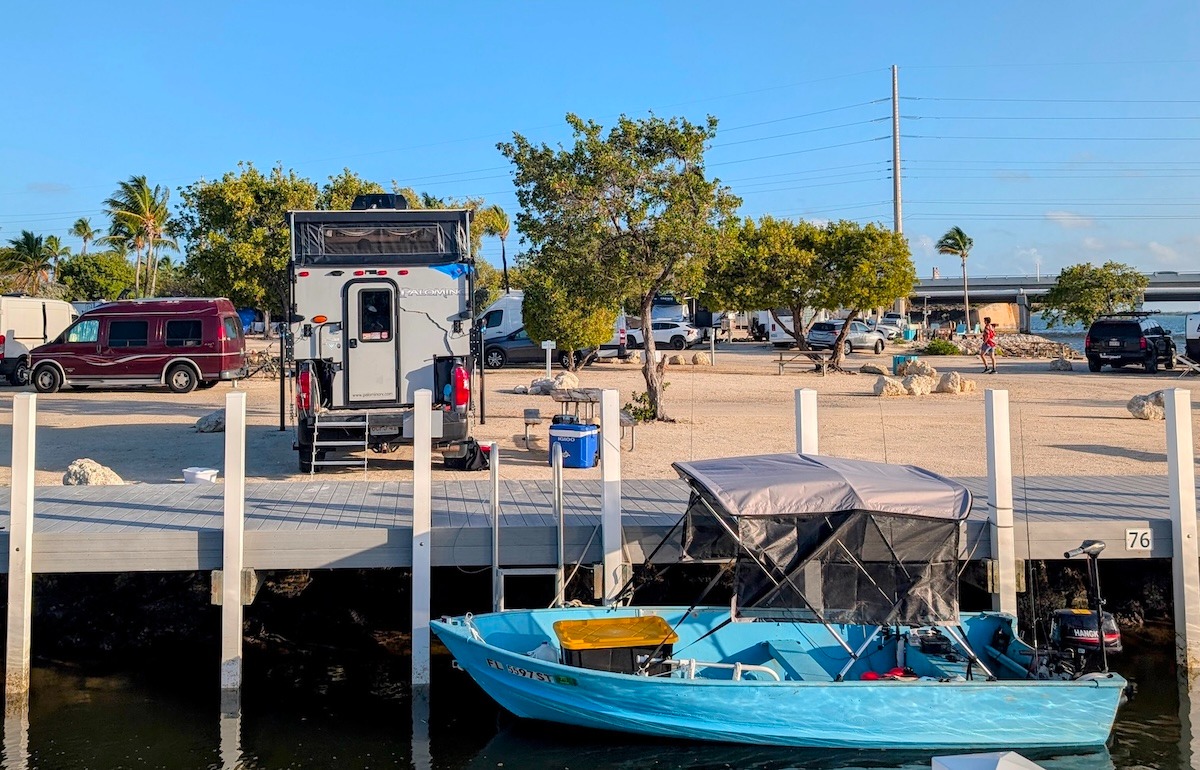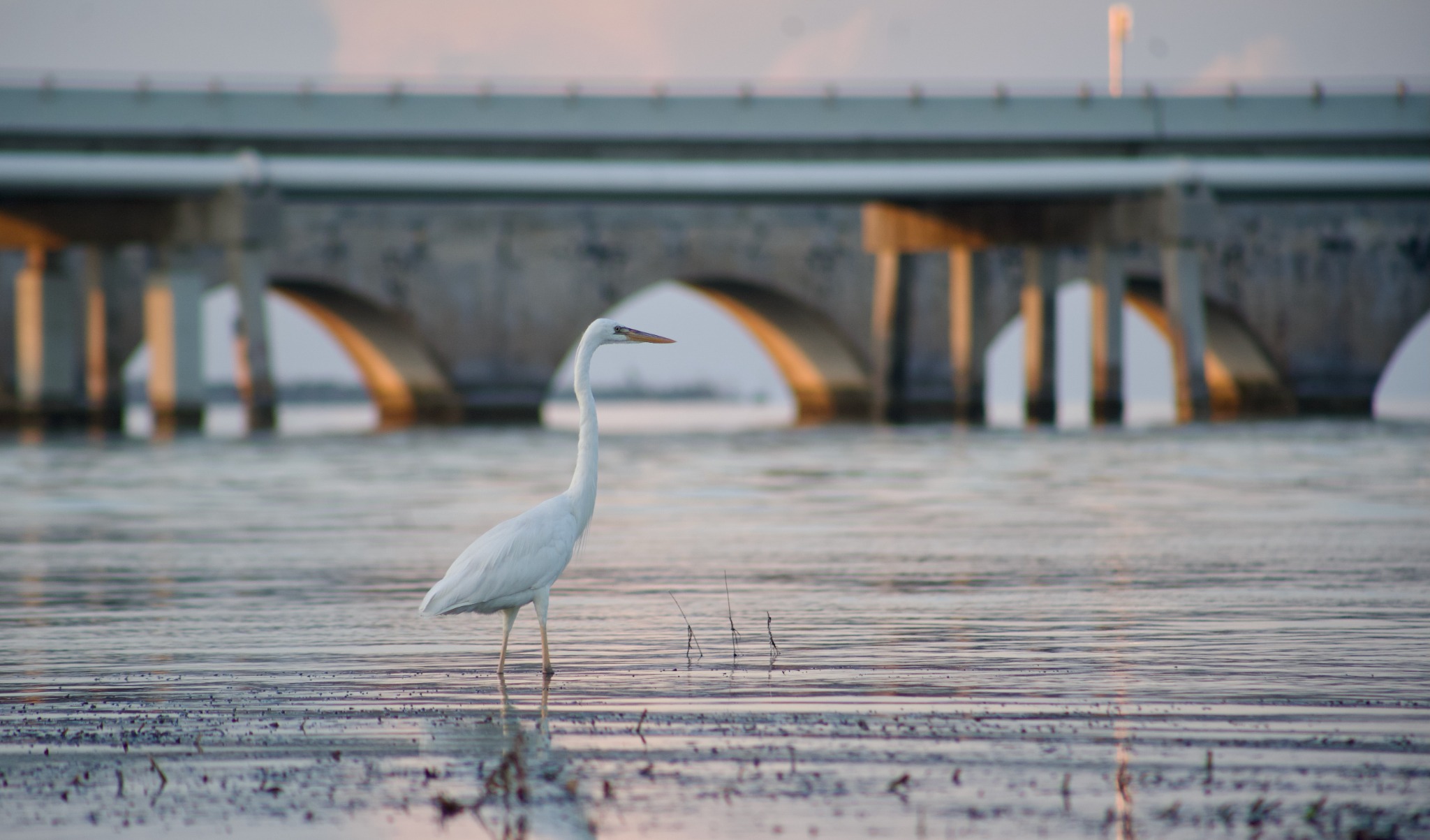
How to Truck Camp in the Keys on a Budget (Spoiler Alert: You Can't)
But here are our Top 3 Expert Tips for not going completely broke.
We didn't follow any of them.
1. Plan Ahead For us, one of the main attractions of the truck camper is that you don't have to plan ahead very far. If you get to a place you like, you can stay as long as you want, and if you don't like it, you can keep on moving – unless of course, your vacuum brake booster fails (see "Stranded on Cape Fear"), or you back over a hidden fence, (Ben Saves the Day)

By far the most economical way to camp in the Florida Keys is to stay at thestate park campgrounds, at $30/night for RV sites (tent sites are $10/night but the state park system has to lump truck campers in the same category as 50 foot Winnebagos). But to lock in one of these coveted spots you need to make reservations a year in advance. A year ago we didn't know a Class C from a hard top. We didn't even decide to buy a truck camper until January, giving us almost two whole months to plan our trip.
We weren't paying any attention to local news, so we didn't realize that a historic wildfire had blocked the the only two roads connecting the Keys to the mainland.
You can sign up to receive email alerts whenever there is a cancellation, but you can't count on it, especially in high season...unless you get lucky and there's a natural disaster! We weren't paying any attention to local news, so we didn't realize that a historic wildfire had blocked the the only two roads connecting the Keys to the mainland, promoting to folks rethink their weekend plans for camping in the keys. By the time we hit Route 1 it had just reopened, and the ground on either side highway the ground was smoking like a bbq pit. To the east a plume of bruise-colored smoke still swirled.
After our two nights at the state parks were up (one atJohn Pennenkamp Coral Reef State Park in Key Largo, and one at Curry Hammock State Park in Marathon) there were no more cancelations. We found ourselves stuck half way down the Keys with no where to stay that didn't cost $300 a night.
The problem with the Keys is there are no Cracker Barrels, or Walmarts (although in our experience most Walmarts no longer allow overnight parking anyway). I called the Bass Pro Shop in Marathon, where some YouTubers reported staying just two years ago. The woman who answered didn’t even know what I was talking about.
2. Don’t bring a boat!
Bring a kayak, a canoe, an inflatable flamingo, anything else! You can launch them pretty much anywhere and they don’t have much stuff that can break.
A boat on the other hand, even a small boat, needs a boat ramp. Until we got to the keys, the boat ramps we encountered were either free to use or cost less than $10. In the Keys, they might advertise a boat ramp as costing $25, but that's just to launch; it's another $25 to park your trailer and another $25 to take your boat out. This was even true at some public boat ramps.
In the Keys, they might advertise a boat ramp for $25, but that's just to launch; it's another $25 to park your trailer and another $25 to take your boat out.
After extensive Google research and some phone calls, we did find a few free county-run boat ramps. But a free boat launch doesn’t do you any good if you have no place to stay that doesn’t cost $250-350 a night.
After months of dreaming about diving and fishing in the crystalline turquoise waters of Keys, we were this close to giving up and hightailing it for nearest Cracker Barrel on the mainland, about 2.5 hours away.

Then we called Big Pine Key RV park. They offered "rustic" campsites (what the state parks would consider a tent site) for a mere $113 a night, and they do not discriminate against truck campers! For $10 more we could store the boat, and for $20 more we could have our own private boat slip (no more backing up onto sketchy ramps)! And the longer you stay, the cheaper it gets. We ended up staying about 10 days and paying around $68/night for the campsite, plus $20/night for the boat slip.
Not only was the rustic campground cheaper, but it suited us way better than the RV campground, which is basically just a parking lot. The rustic sites are more spacious, with trees and picnic tables. It's like the different between the city and the suburbs. Incredibly, the rustic campground was only about 2/3 full so most nights the campsites on either side of us were empty. There were even some waterfront sites available. We intended to switch, but the site we had was already pretty sweet, so we never got around to it. It faced the canal, so we could tie up our boat right outside our front door, and we were still only about a 100 feet from rocky coastline, where the modern Spanish Harbor Channel Bridge spans the water alongside the crumbling concrete arches of the historic 1912 bridge.
The only catch: no generators allowed.

3: Buy Solar Panels!!
Without plugging in to a power source, our camper would only operate for about 36 hours. That meant no refrigerator, no charging devices, no raising and lowering the soft top, and no Fish Finder, since it charged off our camper battery.
Why hadn’t we gone solar before? We wanted the option of carrying a boat or kayaks on the roof. And we thought for this trip we'd be all set with our backup lithium battery and inverter, except the battery turned out to be a lemon and we were still fighting with the company to get them to take it back.
Our inelegant solution? Every couple days we plugged the camper into the truck, giving it just enough juice for the jacks to slowly, jerkily lower the soft top. We'd drive to a public parking lot, usually the Winn Dixie, where no one seemed to care if we loitered for a few hours with a generator loudly chugging away.
The grocery selection at Winn Dixie made Publix look like Whole Foods, except for the beer and wine section, which was bigger (and better) than the produce section.
We usually went in the afternoon, and stayed for dinner, running inside for any forgotten ingredients. The grocery selection at Winn Dixie made Publix, where we'd been shopping on the mainland, look like Whole Foods, except for the beer and wine section, which was bigger, and better, than the produce section. This wouldn't have been so surprising if the grocery store hadn't been located right next door to the Winn Dixie liquor store.
We did some of our best wining and dining in the Winn Dixie parking lot, Ben constructing delicate urumaki out of fresh caught snapper, while roosters crowed and shopping carts rattled past. (In the Keys, feral chickens are as common as pigeons.)
But I would trace those priceless memories for $300 worth of solar panels in a heartbeat.
Post a comment